-
CARING FOR YOUR JEWELLERY
Fine jewellery is an investment. Understanding how to properly care for and protect it will go a long way towards ensuring it maintains its beauty and gives you a lifetime of pleasure. DEEDEE jewellery is made to the highest standards and is designed and crafted to be worn and enjoyed. Jewellery is made of hard and durable metals and most gemstones are hard and durable but still, jewellery by its very nature is delicate. Therefore, all jewellery should be worn and stored with a reasonable amount of care.
There is boundless information available on how to care for jewellery, some of it good, some not so useful, and some of it downright incorrect. Superior guidance which prevents harm and keeps your jewellery in its best condition is below along with simple helpful habits as well as notes on routine maintenance and care of specific jewellery items.
To begin, I offer the most important recommendation you'll ever get, and you won't hear this often because most jewellers will let you buy anything you like regardless - they won't even mention it for fear it could change your mind - and here it is:
Know Thyself
You know who you are better than anyone. You know your lifestyle and habits. You can be given all the jewellery care information in the world but only you know how closely you will follow it, or if you will follow it at all. Getting real here will save you endless future headaches. Certain people subject jewellery to more "rough wear" than others. It's not a judgement, it's a fact. Certain people are more willing to clean their jewellery and be conscientious about its storage; again, not condemnation, just fact. Once you purchase your item, you are free to do with it as you wish but in general, if you want it to remain beautiful and lasting then a certain amount of reasonable care is necessary; another fact. If you will not remove jewellery for sleeping, bathing, swimming, chores and strenuous activity then you should probably invest in everyday pieces with the best chance of standing up to your particular lifestyle. That said, I am not a fan of absolute rules, and what you love you should own but you should own it knowing that it may have its limitations, be best suited to special occasion wear, and require a little more of your attention in certain situations. I'm always happy to help you understand all this so everything you purchase from us, you will continue to enjoy for years to come. Let's get to the basics:
Last On, First Off
When dressing, apply cosmetics, lotions and perfumes before putting on jewellery to limit its exposure to damaging toxins. Pearls because they are organic are particularly sensitive to perfume and hairspray. If you're out for the evening and reapplying in the powder room, put your opposite hand in front to offer protection and rinse the item in warm water when you get home. Taking jewellery off first prevents snags and damage to it as well as your fine clothes.
Embrace One Place
Have a regular place where you put jewellery, particularity engagement rings and wedding bands, when taking them off for short periods. Make it safe and out of reach of children and pets but not so out of reach that it's inconvenient. If you've ever put your rings down while your mind was on something else, you know the panic of not knowing where you left them. Always walk them to their designated safe place and they will always be there when you want to put them back on.
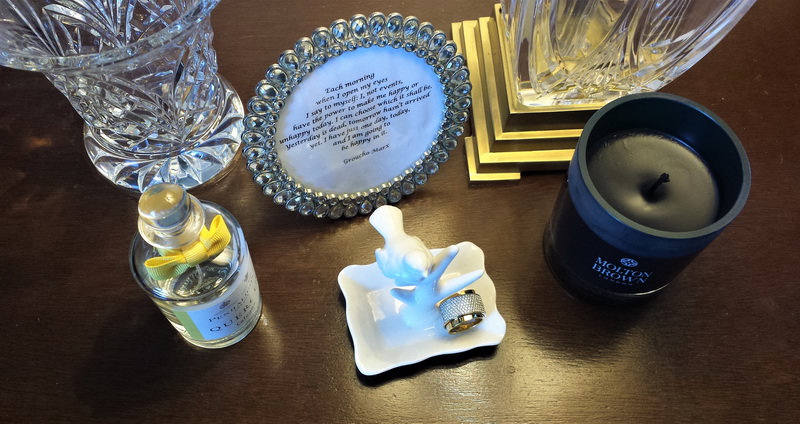
Keep it Private
Never take your rings off in public places such as restrooms. It's too easy to accidentally leave them behind on the side of a sink. Putting them in your pockets is less risky but if you forget in the moment it's easy for them to fall from pockets. It would be far better to wash your hands with the rings on and then clean the rings safely at home than to risk walking away and leaving them behind. If the gemstones are likely to be harmed or you want to keep them pristine in the moment, the better way is to just wash your fingertips. If you absolutely must wash your whole hand, hold the shank of your ring gently in your teeth while you wash, it is impossible to forget it this way.
Not Better Together
Store your jewellery separate; avoid putting it all into one box where pieces touch each other. This is particularly important with diamond, as diamond can scratch itself and very easily scratch other stones and metals. Almost every gemstone is much harder than the metal it is set in and gold and platinum are easily scratched by contact with other jewels. Store earrings separately in a pouch with the backings returned to the posts. Most bracelets and bangles can be permanently kinked, dented or bent if not stored carefully and omega link, wires and snake chain necklaces are very prone to kinking, sometimes irreversibly so, if not stored properly. Try to keep items in their original box or pouch or a larger jewellery box with individual padded slots and sections. This one is common advice you probably have heard before, but do you do it? Not always I'm sure. I'll tell you a secret: even I don't do it every single time. But what I can assure you is this: being as diligent as you can about this one goes a long, long way towards keeping your jewellery in its best shape.
I'm a big fan of WOLF jewellery cases from the UK. They're elegant, superb quality and you'll love them. You can check them out here: www.wolf1834.co.uk.
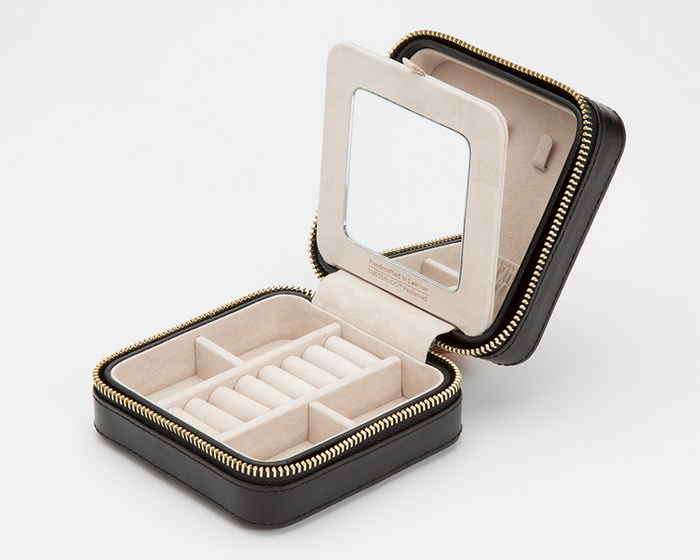
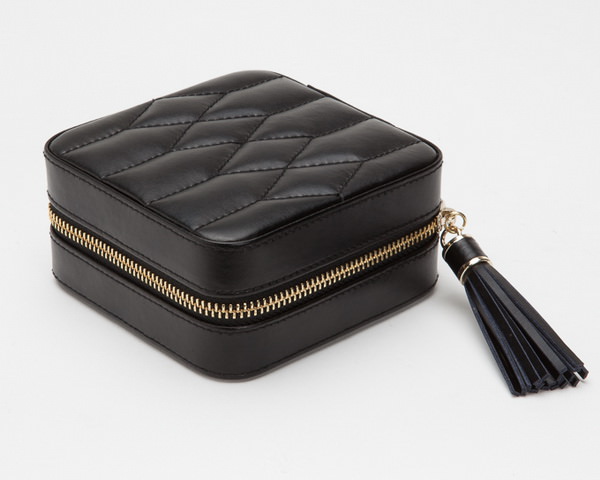
Be A God
It is common wisdom that "cleanliness is next to godliness." Historically, many gems were thought to have fallen from the heavens as a gift of the Gods. Show them respect: keep them clean. Jewellery can collect build-up from shower gel, hand wash, and common cosmetics such as moisturizers, makeup or perfume making it dull and lifeless over time. Diamonds in particular love grease and will easily become less brilliant without regular cleaning. Wiping your jewellery with a soft cloth, like that for eyeglasses, after you take it off can reduce this significantly.
Most jewellery can be cleaned at home with a very soft tooth brush in a bowl of warm water with a drop of mild dish soap. Dawn is a perfect mild grease-cutting choice. Rinse the item thoroughly under warm water, giving it another light brush to remove any residue and pat it dry with a soft, lint-free cloth. Remember to put the stopper in the sink or use a wire strainer to avoid losing a stone or the item while rinsing. Gemstones that respond well to this manner of cleaning are: diamond, ruby, sapphire, amethyst, aquamarine, citrine, garnet, heliodor, jadeite, kunzite, peridot, tanzanite, topaz, tourmaline, zircon and emerald (with caution). Some gemstones are more sensitive and best cleaned just by wiping them with a soft damp cloth and patting them dry: pearl, coral, ivory, and turquoise. Ideally clean your jewellery every month to keep it at its best. For additional information see our advice on cleaning gems and jewellery.
Don't Abide Fluoride
Never use toothpaste to clean jewellery. It's been widely reported to work because I am asked about it often, but it's a big no-no. Toothpaste contains fluoride, and fluoride can damage the alloys in your gold jewellery. And truly, it does a mediocre job of cleaning jewellery at best. Keep it for your pearly whites.
Be Size Wise
It is easy for a ring which is too loose to become misshapen over time causing gemstone settings to loosen. It also increases the risk of the band cracking or splitting and you can lose the ring entirely or worse, suffer ring avulsion. Ring avulsion happens when a ring on one of your fingers is caught on an object and gets yanked off suddenly. The force can strip off skin, blood vessels, and tendons along the entire length of your finger. The process is called "degloving." Conversely a ring which is too small will be uncomfortable and subject the gemstone settings to undue strain and tension and you may have to have it cut off if it becomes permanently stuck.
Swim Naked
Remove jewellery before swimming or using a spa because chlorine is detrimental to many gems, emerald in particular, and almost all golds. While pure gold is a noble metal and resistant to attack, the other metals in your gold alloy are highly susceptible to damage from chemicals. One of the most hazardous is chlorine because it literally leaches out the nickel, zinc and silver in your gold alloy leaving microscopic bubbles inside your jewellery. When this happens your karat gold jewellery will become brittle and more prone to damage: prongs can spontaneously fall off, settings become destabilized and precious stones can be lost. Even a single exposure can begin the process; it can do more damage in an hour than several years of wear. If you're a frequent swimmer, platinum remains unaffected and would be an investment you won't regret for your engagement ring and wedding bands.
Hold The Housework
Abrasive chemicals and cleaners damage or discolour metals as well as harm some coloured gemstones. So before coming into contact with harsh or abrasive household cleaning products such as bleach, paint, furniture polish, hair dye, nail polish remover and other solvents, remove your jewellery. Chlorine bleach in particular can pit and damage gold alloys. Gloves will work to protect rings; however, it does not prevent them from getting knocked and doesn't protect other items from fumes. Removing jewellery is always safer.
Wet is a Threat
Do not get threaded pearls or beaded jewellery wet. This will stretch out the silk thread making it loose. Pearls and beads which move freely on the thread or with loose knots are not held securely and increase the likelihood of the thread breaking. Got caught in the rain with your pearl necklace on? Give it a quick rinse and lay it flat to dry on a soft cloth. The thread is resilient for the rare occasion but make it a habit and you do damage.
The Hard Truth
Avoid wearing inappropriate jewellery while doing extreme physical activity or heavy manual work. Gems in general are hard (there are some exceptions) but even the hardest can still be damaged if subjected to extreme conditions. Diamond has grain, likened to wood grain, along which it more readily splits. It can be chipped by a hard blow along this grain as seen here at 9 o'clock.

Other gems can be chipped or cracked more easily and jewellery metals in general can be dented and bent with extreme contact. Some jewellery is hollow; this is common with hoop earrings and some chain and bracelet links. Use extra care with these items because they are more easily damaged and can be at best, expensive and time consuming to repair, and at worst irreparable. Even if you are not subjecting your jewellery to harsh wear and are delicate in your movements please be aware that repetitive impacts of lower intensity also results in damage over a prolonged period of time.
Knowledge is King
Know your gemstones, their needs and special care. Many colored gemstones are routinely treated to improve the appearance of colour and clarity and these stones can be readily damaged by heat, solvents, steam and ultrasonic cleaners. Excessive heat and sudden temperature changes may also fracture some gems. Heat easily removes the natural moisture pearls and opals need to keep their beauty causing them to dry out, crack and discolour. We are always here to give you any advice you need. And in general, when in doubt always err on the side of caution.
Evaluate and Insure
Keep detailed up-to-date valuations on your jewellery. Under valuation causes problems where an insurance claim must be made. Know the particulars of your policy; know what will be covered and how it will be covered, and what may not be covered. During evaluation it's a good time to ask us about any needed repairs and special care recommendations for your jewels.
Keep it Tight
Picking up rings by the band and not the centre stone helps prevent the setting and claws from becoming loose. Additionally, not touching the stone helps keep it clean and free of build up from the natural oils in your fingertips.
Fidget Less
Every year items get repaired whose sole cause of damage was fidgeting. Try to avoid playing with or pulling on necklaces, link bracelets or pearl strands as this will stretch the links or loosen the pearls. If you twist your rings you are going to loosen settings. The less you play with your jewellery the better.
Prevent Knots
When storing chains keeping them fastened helps stop them from getting tangled. There is some advice about threading chains and bracelets through straws to stop tangles. This is highly impractical. Straws are long to store and because you have to fasten the item, half the length of the chain is outside the straw where it can contact other items in your jewellery box, get scratched and possibly even break. It's also incredibly inelegant. I like to use small baggies or pouches and leave the ends and the clasp out slightly. Do up the clasp and place the bulk of the necklace into the baggie leaving a little bit of the end and the clasp out. Seal the baggie and that's it. Storing this way prevents any tangles and stops contact with other items avoiding scratches and breaking delicate links. It's also easy and simple for travel as well.
How to Handle a Tangle
If you end up with a knotted chain or several chains tangled together the best thing is to try to fix it right away. Ignoring a knot and wearing the necklace anyway will only tighten the knot making it worse and eventually leading to breaking the chain. Use a small pair of tweezers to grab hold of a link on the outer part of the tangle. You're holding one link not the entire knotted area.

It has to be one only to create freedom of movement in the others; while holding tight gently shake from the wrist in different directions and the movement will cause a little of the knot to loosen up. This usually only happens in a specific direction so shake to the sides, up and down and at angles until you find it loosening. Hold another link elsewhere and repeat. When the knot begins to loosen, you will see what to manipulate to begin to remove the knot. Continue with the process until you work the knot out. It's easy enough to learn but can be completely avoided if you store chains properly.
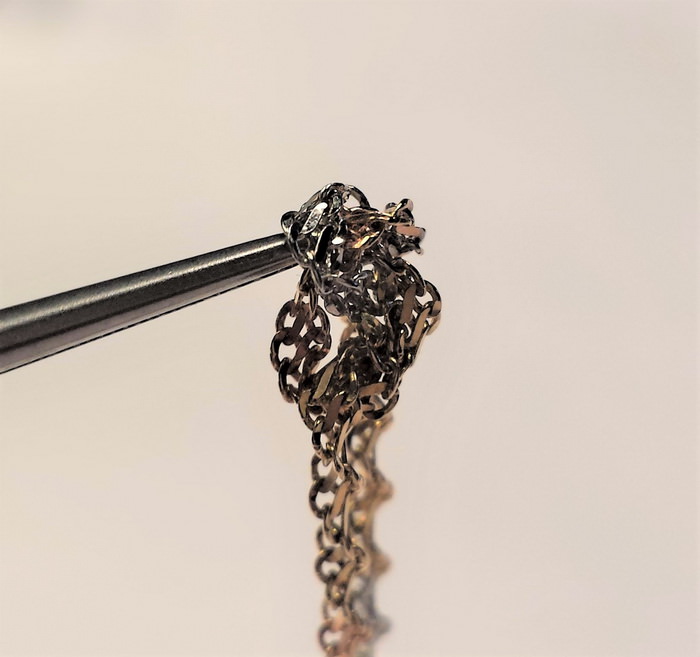
ROUTINE MAINTENANCE
Wear and tear refers to the deterioration of the aesthetics or function of your jewellery as a result of regular use. Virtually all jewellery will experience wear, the degree to which depends on how frequently it is worn, how much contact it receives and the specific nature of the piece. Rings and bracelets are typically exposed to more wear than other items of jewellery. Wear and tear generally manifests as scratching and thinning of the surfaces and weakening of smaller parts such as claws and clasps.
All gemstone settings will require periodic work in order to maintain security and prevent lost gemstones. The more often you check your settings the less risk of an unexpected loss. Taller settings or larger clusters wear more readily. Regular maintenance should be undertaken on all gemstone settings including: repositioning, re-tipping or replacing individual claws which have worn down or been bent, knocked, pulled or have lost contact with their gemstones.
The very best way to look after your jewellery is just to be mindful when wearing it and have us take a look at it on a regular basis to significantly reduce the risk of unexpected problems. Here are some tips for specific types of jewellery. Please refer to the gemstones section for detailed advice on the care of individual gemstones.
CARING FOR EARRINGS
Earrings usually contain small delicate parts requiring particular attention. Always remove dangling earrings for activities where the risk of damage is higher: exercise, sporting activities, bathing, sleeping and energetic work. Stud earrings can be worn more comfortably in these instances as long as you are certain the backings are secure. Even so, all earrings can be damaged by these actions. Take extra care when combing hair and pulling clothing over your head as earrings can easily get caught. When removing earrings grip the front motif carefully with one hand and pull the earring back off gently with the other; do not pull the earring off from the front because this can easily damage the setting. Pull straight back as doing so at an angle can easily bend the posts. With pearl studs it is common that this process results in the pearl coming loose over time. You can help prevent this by pressing the pearl into the earlobe rather than holding it while you pull the backing off gently. All earring backings loosen over time. Butterfly backs should show some resistance when being taken on and off; if they are moving too easily they are not secure. After removing them, return the backing to the posts: left to left and right to right. You are less likely to lose a backing this way.

Depending on how hard wearing you are on earrings, we offer alternatives and you might consider more secure backings such as la pousette locks. With hoop earrings and lever backs be sure the fastenings are lined up before you attempt to lock them into place because forcing them in wrong causes damage and if incorrectly secured they will come loose.
CARING FOR BRACELETS AND BANGLES
Bracelets and bangles are most susceptible to being knocked or caught during wear. You should use reasonable judgement and remove all wristwear before any strenuous or vigorous physical activity, as well as bathing and sleeping. Bracelets and bangles are subjected to excessive force from everyday activities around the house or office because repetitive impacts or lower intensity can result in significant damage over a period of time. Most bracelets and bangles can be permanently kinked, dented or bent if not stored individually in their original box or pouch. Wearing several bracelets or bangles together or alongside a watch, something many commonly do, will cause them to rub on one another resulting in wear. The look is well worth it just be mindful.
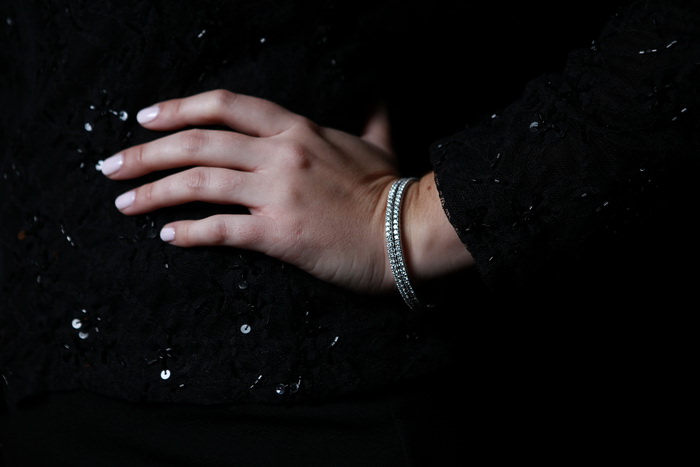
It is best to keep gold karats all the same so that harder golds do not act upon softer golds. Plain gold bangles and some link bracelets are commonly hollow and extra care is required to avoid denting them. Wearing bracelets that are the incorrect length and too tight or too loose will increase the risk of damage from strain or catching respectively. Please be sure to check the clasp mechanism is secure. You can usually do this by sound and feel. A note on traditional safety chains: they can be fitted to most items and they offer some measure of security if the clasp were to unexpectedly open; however, they dangle and can be easily snagged on things. There are better alternatives available in most cases.
CARING FOR PENDANTS AND NECKLACES
Jewellery worn around the neck can easily be caught, especially during strenuous or vigorous physical activity, as well as bathing and sleeping. Try to avoid playing with or pulling on your necklaces as this stretches the links and weakens the clasp. Omega links, wires and snake chains are very prone to kinking, sometimes irreversibly, if they are not worn and stored with care. Necklaces with a fine link or texture can easily catch hair and clothing fibers and this can be very difficult to remove but it's easier to do when you first notice it, rather than letting it become wound around more tightly over time. With new clasps, close it in front of you for the first few times so that you know what it feels like properly secured before you begin to do this behind your head. The bales of free-running pendants commonly wear down and become thin from repeated abrasion against the chain. Please visually inspect your pendants often before it results in an unexpected loss.
CARING FOR RINGS
Rings typically require greater care than other types of jewellery because they come into more frequent contact with objects and surfaces. It is strongly recommended that you remove rings before engaging in strenuous or manual activities such as vigorous exercise, sports and gardening. Keep in mind that rings are in contact with many things repeatedly and it's possible to subject your ring to excessive force during everyday activities at the office and home because repetitive impacts of lower intensity can also result in damage over a prolonged period of time.
It is normal for all metal surfaces to show scratches and small indentations over time. This is particularly noticeable on wedding bands without gemstones because the bottom is subjected to the highest level of wear and when the band rotates it results in visible wear over the entire surface. Provided there are no unreasonably deep markings some consider this "patina" to be a surface finish in its own right. At DEEDEE we use only refined gold, never simply recycled gold, because this wears much better showing fewer markings over time. If you would like your ring to retain its polish as long as possible take care when handling or touching metal handrails and doorknobs, stone countertops and other hard surfaces. If your ring has a surface finish, such as rhodium plating, sandblasting, etching, engraving or brushing, these are not permanent applications and may have to be reapplied over time. There is no hard and fast rule about how long these finishes will last as this depends entirely on the level of wear the item receives. Bear in mind that marks on a matt or brushed finish can be more noticeable compared to a bright-polished finish. Reapplying special finishes is a simple maintenance procedure.
It is easy for a ring which is too loose to become misshapen over time causing gemstone settings to loosen. It also increases the risk of the band cracking or splitting and you can lose the ring entirely or worse, suffer ring avulsion. Ring avulsion happens when a ring is caught on an object and gets yanked off suddenly. The force can strip off and damage finger tissues, including muscles, tendons, and bones along the length of your finger. Conversely a ring which is too small will be uncomfortable and subject the gemstone settings to undue strain from tension and the force required to pull it off and push it on. And you may have to have it cut off if it becomes permanently stuck. Fingers do change in size over time and at any time if your ring is not fitting as well as it should contact us and we would be happy to make it right again for you.

Loading...
